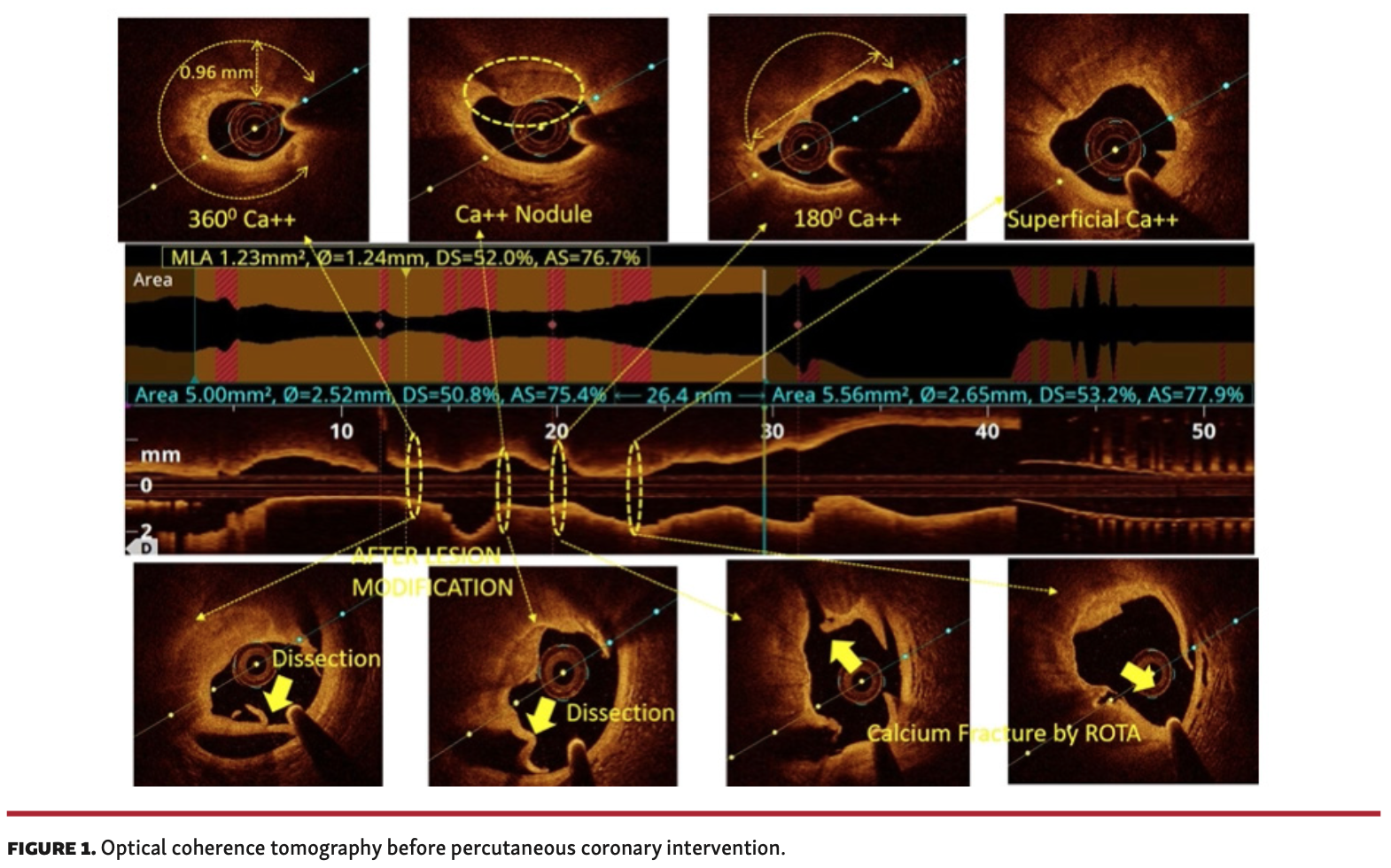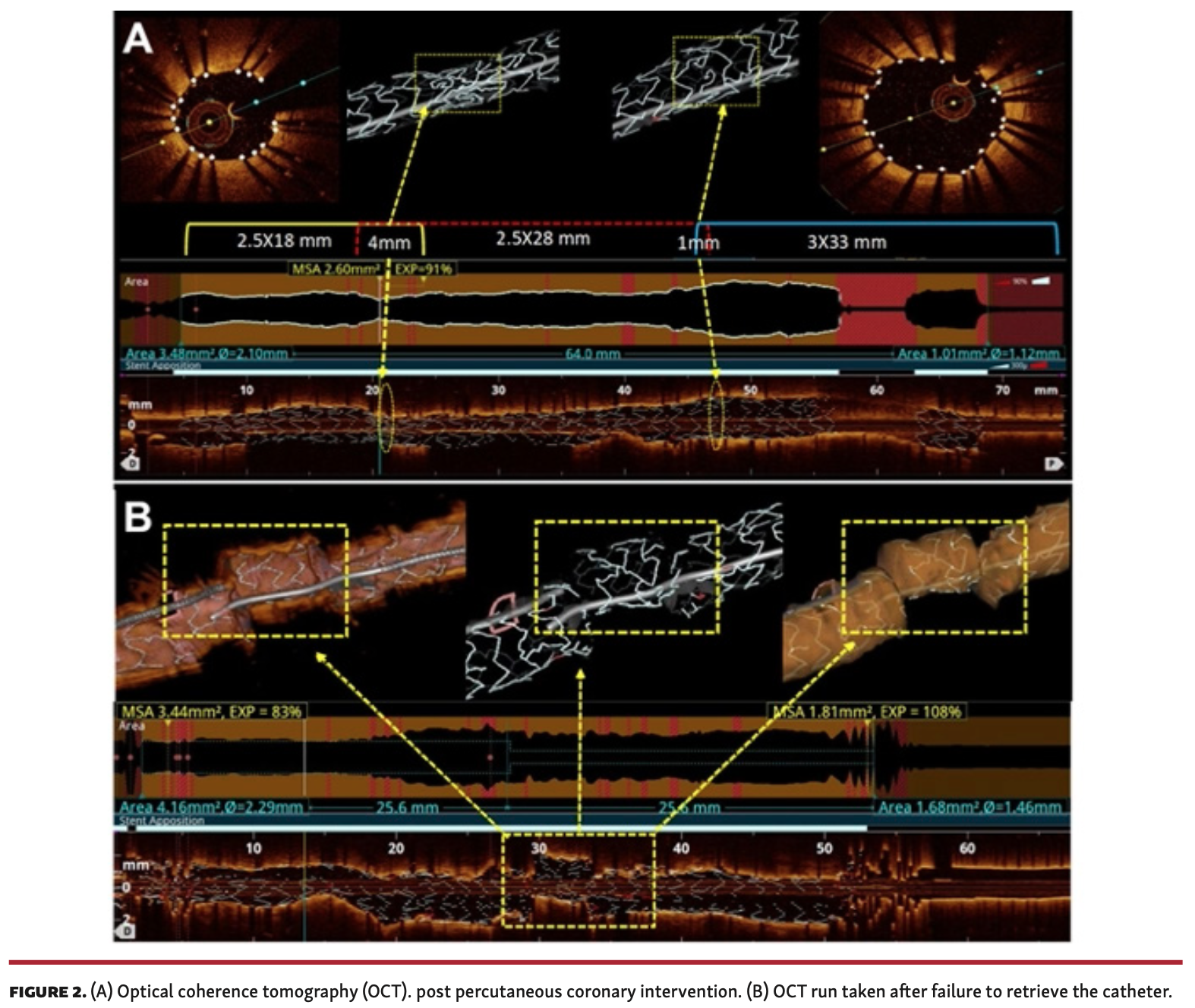ADVERTISEMENT
Stuck OCT Catheter: An Unanticipated Complication
Abstract
J INVASIVE CARDIOL 2022;34(2):E149-E150.
Key words: intravascular imaging, optical coherence tomography, PCI complications, stuck catheter
Case Presentation
A 70-year-old female was taken up for optical coherence tomography (OCT)-guided percutaneous coronary intervention (PCI) of a calcified left anterior descending artery (LAD). Pre-PCI OCT showed a calcium score of 4. Post rotational atherectomy and non-compliant balloon (Figure 1), 3 overlapping everolimus-eluting stents were placed from distal to proximal LAD. Post-PCI OCT run showed well-apposed and expanded stents (Figure 2A). While removing the OCT catheter, the catheter was railed off from the guidewire and stuck in the distal-most LAD. After administration of intracoronary nitroglycerin, an attempt to remove the catheter was unsuccessful. We planned to use a small balloon to release it and began insertion of a second guidewire distal to the stuck catheter. However, the guidewire could not be negotiated ahead of the first stent overlap. A repeat OCT pullback showed a grossly deformed LAD at the junction of the proximal and middle stent (Figure 2B). In view of the multiple failed attempts to withdraw the catheter, as well as the stent deformities, the patient was referred for emergency surgical intervention. However, she developed slow flow in the LAD leading to a ventricular tachycardia storm and on-table death.
View the Accompanying Video Series HERE.


As the distal tip of the OCT catheter got stuck, its forceful tugging led to LAD stent deformation proximally across the overlap between the proximal and middle stents (Figure 1B).
While imaging distal coronaries with OCT, it is essential to ensure that the catheter does not get railed off from the guidewire.If catheter entrapment is suspected, a second parallel guidewire may be advanced and a small balloon inflation may be used to release the stuck OCT catheter after administering intracoronary nitrates. In case the catheter cannot be retrieved even after this, urgent surgical intervention must be considered.
The purpose of these images is to make the readers aware of the very real and serious risk of a stuck OCT catheter, especially while imaging distal coronary arteries and overlapping stents. In the present scenario, there is an unmet need to establish uniform recommendations for the management of stuck OCT catheters. Increasing the length of the over-the-wire segment and hydrophilic coating of the OCT catheter may also be explored with manufacturers to prevent this complication.
Affiliations and Disclosures
From the 1University of Minnesota Medical Center, Minneapolis, Minnesota; 2Interventional Cardiologist, Army Hospital Research and Referral, New Delhi, India; 3DM Resident (Cardiology), Dr RML Hospital & PGIMER, New Delhi, India; 4Head of Department (Cardiology), Military Hospital Jaipur, Rajasthan, India.
Disclosure: The authors have completed and returned the ICMJE Form for Disclosure of Potential Conflicts of Interest. The authors report no conflicts of interest regarding the content herein.
Manuscript accepted August 18, 2021.
Address for correspondence: Ankush Gupta, MD, Professor & Head, Department of Cardiology, Military Hospital Jaipur, Rajasthan, India. Email: drankushgupta@gmail.com













